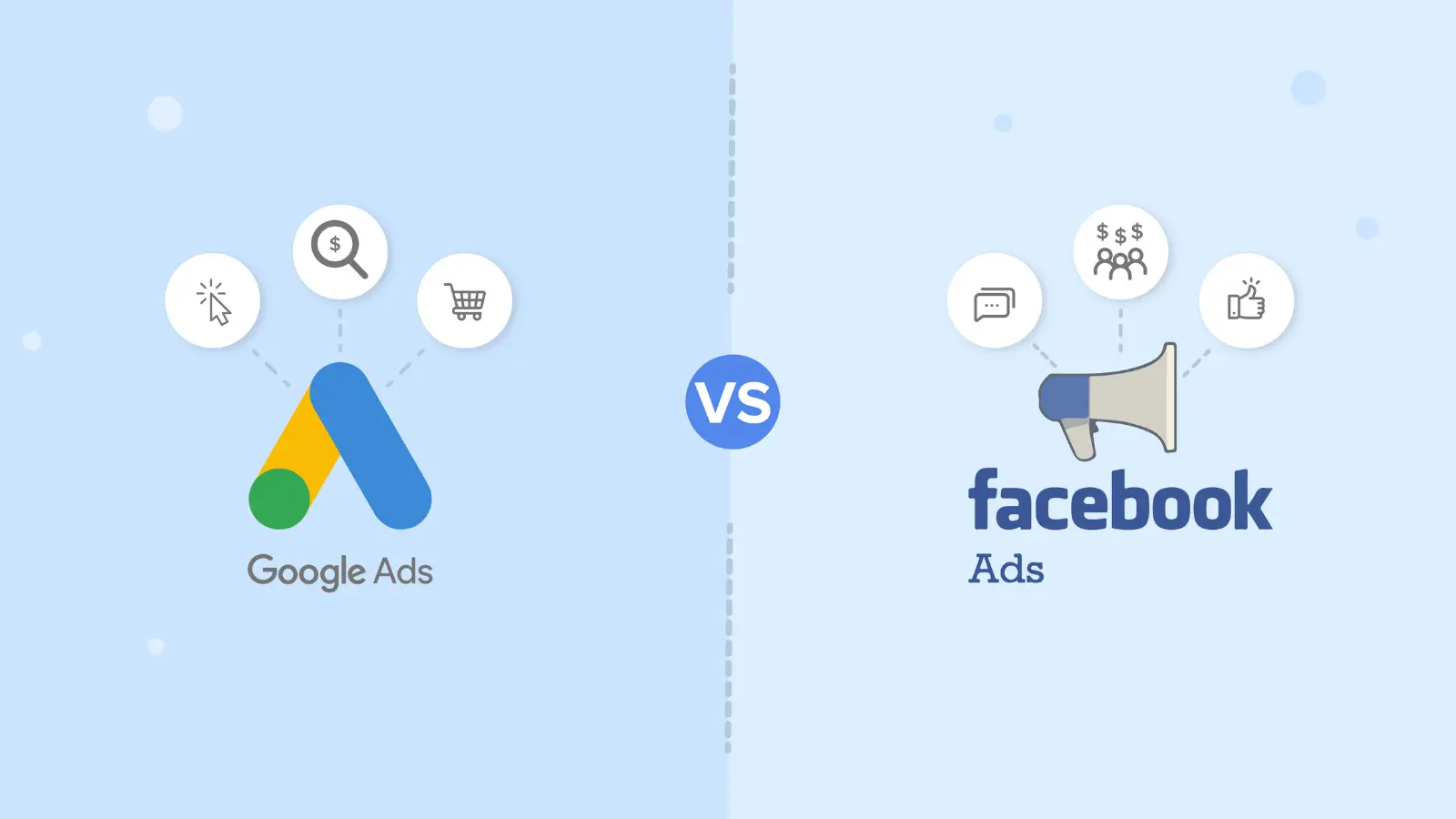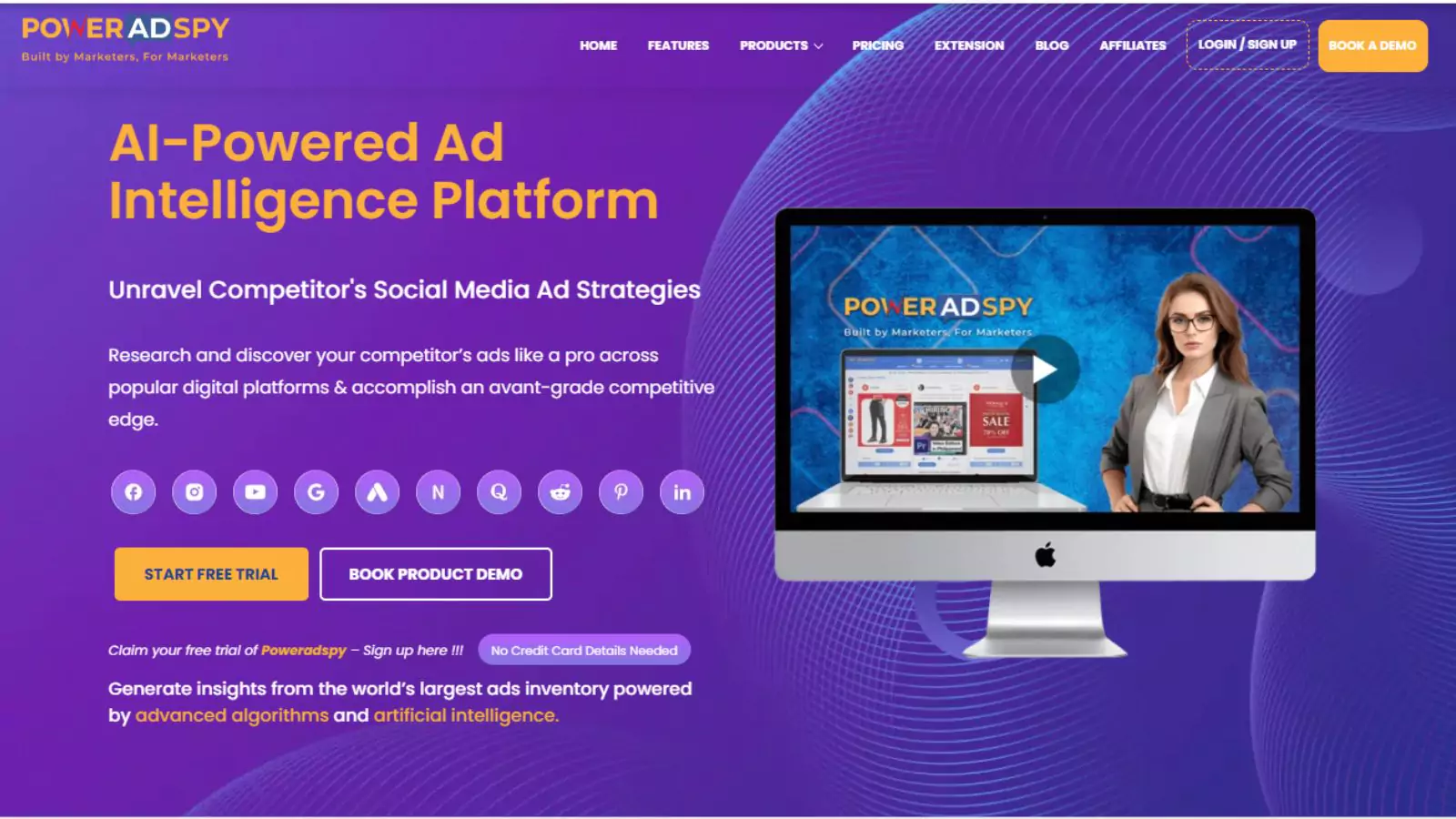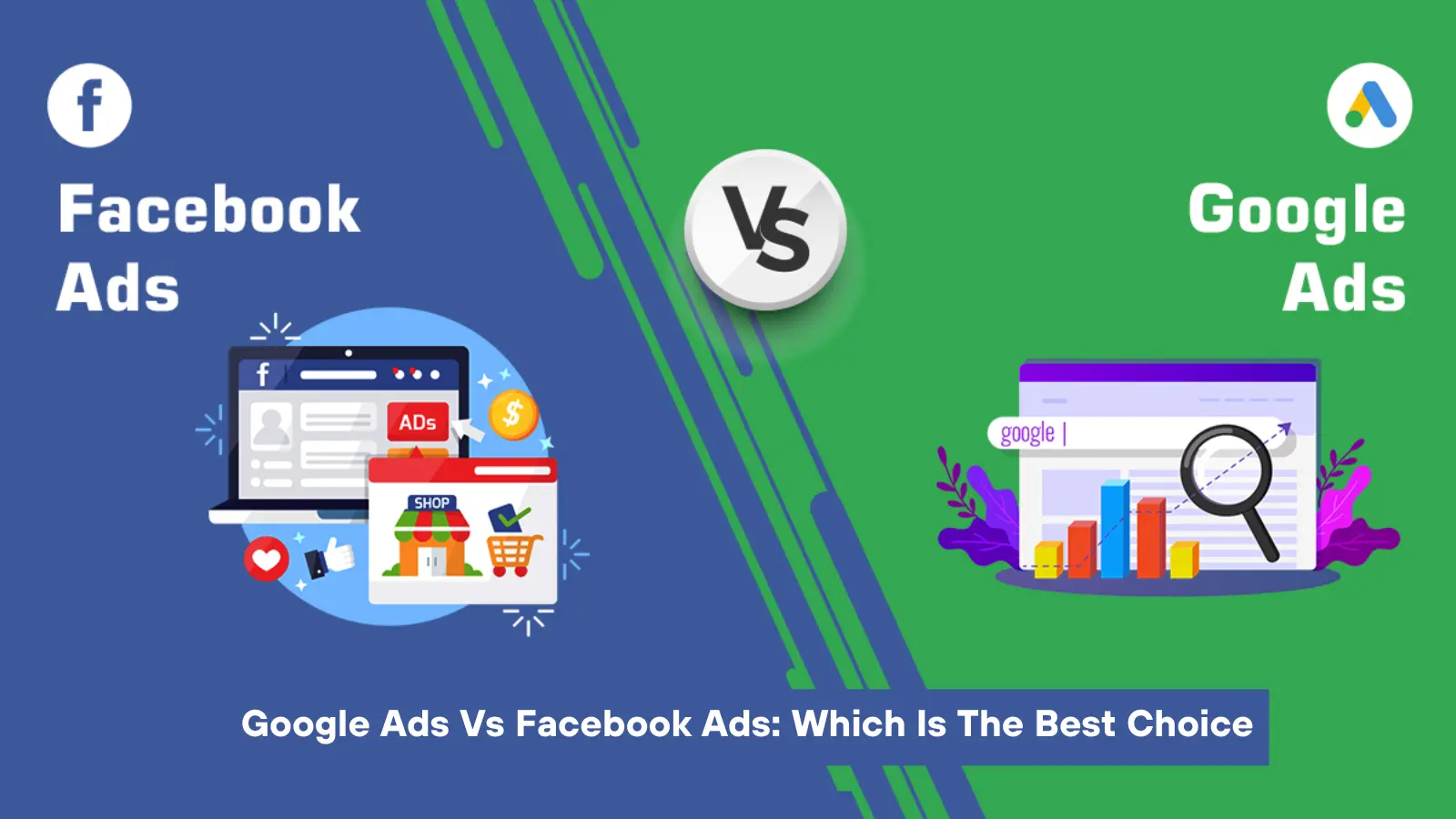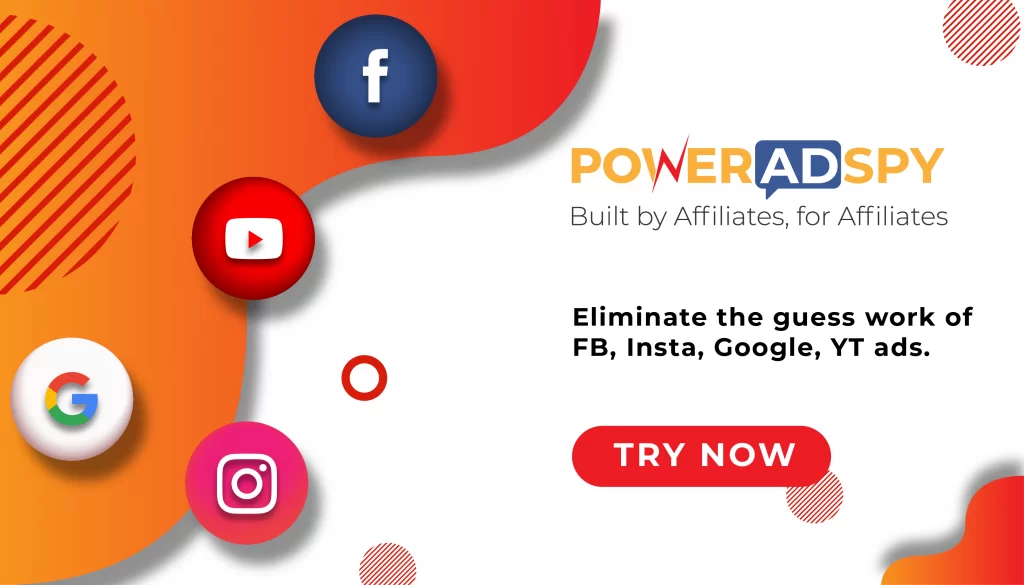Google Ads Vs Facebook Ads: Which Is The Best Choice?
Nowadays, advertising has evolved into a complex landscape where businesses have multiple options to reach their target audiences. Among the various advertising platforms available, Google Ads Vs Facebook Ads stand out as two titans dominating the online advertising space. Both platforms offer unique features, targeting capabilities, and audience reach, making them indispensable tools for marketers worldwide.
Selecting between Google Ads and Facebook Ads poses a significant challenge for businesses aiming to refine their advertising strategies. Each platform possesses distinct strengths and caters to diverse marketing objectives, making it essential for advertisers to understand their differences and align them with their specific goals.
In this blog post, we delve into the comparative analysis of Google Ads and Facebook Ads, exploring their key features, advantages, and limitations. By examining the complexities of each platform, we aim to provide businesses with valuable insights to determine the best choice for their advertising endeavors.
In a hurry? Listen to the blog instead!
Google Ads Vs Facebook Ads: Their Meaning
Google and Facebook Ads are two pillars of digital advertising with distinct approaches. Advertisements of Google targets users actively searching for specific keywords, displaying ads prominently in search results and partner websites.
In contrast, Facebook Ads for e-commerce, or in general, rely on detailed user demographics and interests, targeting audiences based on behaviors and social interactions across Meta platforms like Facebook and Instagram.
Understanding their differences is crucial for businesses aiming to optimize their advertising strategies, as each platform offers unique opportunities to connect with target audiences and drive meaningful results in the ever-evolving digital landscape.
Google Ads Vs Facebook Ads: Key Differences
Google Ads and Facebook Ads, though both effective for advertising, differ in crucial aspects:
Intent vs. Interest Targeting: Google Ads targets users actively searching for specific keywords, reflecting their immediate intent. Facebook Ads, however, rely on user demographics, interests, and behaviors, focusing on their broader interests.
Ad Placement: Google Ads primarily appear in search engine results and affiliated websites, while Facebook Ads display within the Facebook platform, Instagram, and other affiliated apps.
Ad Formats: Google Ads offers text, display, video, and shopping ad formats tailored for search intent. Facebook Ads encompass various formats, including image, video, carousel, and slideshow ads, suited for social engagement.
Targeting Precision: Google Ads provides precise targeting based on keywords and user search behavior. Conversely, Facebook Ads offer detailed demographic and interest-based targeting, enabling advertisers to reach specific audiences.
Audience Engagement: Google Ads prioritizes user engagement with text-based content, focusing on search queries. Facebook Ads emphasize social interaction and engagement, leveraging user interactions, likes, comments, and shares.
Understanding these differences is vital for advertisers to choose the most suitable platform and optimize their advertising strategies effectively.
Google Ads Vs Facebook Ads: Similarities
Comparing Google Ads and Facebook Ads for your business’s advertising needs reveals similarities that should inform your decision-making process when allocating your ad budget. Let’s break down their features:
Reach
Google and Facebook dominate their respective domains – Google in search engines and Facebook in social media. However, both platform provide enormous marketing opportunity to reach their audiences around the world.
Targeting Options
Both of these platforms offer demographic targeting to help advertisers reach their desired audience.
Ad Formats
Each platform provides multiple ad formats to cater to diverse advertising needs.
By leveraging these similarities, advertisers can create integrated marketing strategies for Google ads vs Facebook ads for ecommerce. It helps you harness the strengths of both Google Ads and Facebook Ads to achieve their advertising objectives and maximize their ROI
Now that you understand the differences and similarities between Facebook and Google ads, it would be easier for you to invest your advertising budget smartly. However, before spending anything on advertising, its a good idea to see the trends that your competitors are following. With ad spy tools like PowerAdSpy, you could discover high performing Google ad and Facebook ads without much effort.
PowerAdSpy-
PowerAdSpy is a comprehensive ad intelligence tool designed to empower marketers with valuable insights into the advertising landscape of both Google Ads and Facebook Ads. Here’s a breakdown of how PowerAdSpy’s features cater to advertisers on both platforms:
Keyword-based Search
PowerAdSpy enables users to search for ads based on specific keywords, allowing advertisers to discover trends and analyze competitors’ strategies within the Google Ads for ecommerce ecosystem.
Ad Copy Analysis
With PowerAdSpy, marketers can analyze ad copies used in ads campaigns, gaining insights into effective messaging and copywriting techniques competitors employ.
Ad Performance Metrics
PowerAdSpy helps you see how well your Google Ads vs Facebook ads are doing. It tells you how many people click on your ads, how often they do it, and more. It helps you understand if your ads are working better or worse than other people’s ads so you can improve them.
Demographic Targeting Insights
PowerAdSpy, a Google ad spy tool offers demographic targeting insights for ads, allowing marketers to understand audience segmentation and tailor their ad campaigns accordingly.
Ad Engagement Metrics
PowerAdSpy provides engagement metrics for Facebook Ads, such as likes, shares, and comments, helping advertisers gauge audience sentiment and measure campaign effectiveness.
Ad Filtering and Sorting
PowerAdSpy helps you organize Google ads vs Facebook ads by variety, what type they are, how much people are interested in them, and when they were shown. It makes it easier to look at ads and figure out what’s working well in both Google Ads and Facebook Ads.
Competitor Analysis
By tracking competitors’ advertising strategies and performance metrics on both platforms, PowerAdSpy equips marketers with valuable competitive intelligence to inform their own advertising strategies and stay ahead in the market.
Ad Library Access
PowerAdSpy provides access to a vast database of historical ads from both Google Ads and Facebook Ads, enabling marketers to uncover trends, identify successful ad campaigns, and draw inspiration for their own creative endeavors.
Read More
Facebook Ads vs Google Ads: Which is Better for Your Small Business?
The Power of Facebook Ads For E-commerce Business Growth
Paid Social Media Advertising Vs. Paid Search: Key Differences
Google Ads Vs Facebook Ads: Which Is The Best Choice?
Choosing between Google Ads and Facebook Ads depends on.
Marketing Objectives: Google Ads for high-intent leads; Facebook Ads for brand awareness and engagement.
Target Audience: Google Ads target users actively searching; Facebook Ads target specific demographics, interests, and behaviors.
Budget: Google Ads offers flexible budgeting. Facebook Ads can accommodate various budget sizes.
Ad Formats: Google Ads are primarily text-based. Facebook Ads offer diverse formats like images, videos, and carousels.
Intent Targeting: Google Ads capitalize on search intent; Facebook Ads leverage social interactions and engagement.
Effectiveness: Google Ads drive conversions; Facebook Ads build brand awareness and social proof.
Consider these factors to determine the best platform aligning with your advertising goals and audience preferences.
The Bottom Line
Choosing between Google Ads vs Facebook Ads is hard for any marketer. However, the decision depends on what each business wants to achieve and who they want to reach.
With Google Ads, you can capture high-intent leads through search intent targeting, while Facebook Ads help you build brand awareness and encourage engagement with specific demographics. By understanding the strengths of each platform, marketers can tailor their advertising strategies to maximize effectiveness and achieve desired outcomes.
However, navigating the complexities of online advertising requires comprehensive insights and intelligence. It is where tools like PowerAdSpy come into play. PowerAdSpy, a Facebook ad spy tool empowers marketers with invaluable data and analytics to enhance their ecommerce businesses. With features allowing ad filtering, competitor analysis, and performance tracking across both Google Ads and Facebook Ads, PowerAdSpy equips marketers with the tools they need to make informed decisions and stay ahead in the competitive landscape.
While Google Ads and Facebook Ads offer distinct advantages, a holistic approach leveraging both platforms can yield optimal results for ecommerce businesses.









